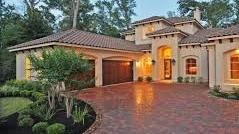Home Hardening

Hardening your Home
Embers from a wildfire can destroy homes up to a mile away. By "Hardening" your home, you can help make your home more fire resistant. This process is done by using ember resistant building materials. Watch this IBHS test of a structure's resistance to an ember storm.
Here are some things you can do to harden your home and make it more fire resistant.
Roof
The roof is the easiest place for a home to catch fire. Wood or shingle roofs are at high risk of being destroyed during a wildfire. By using roofing materials such as composition, metal or tile for roofing, you can greatly reduce the risk of embers lighting it on fire. Also block any spaces between roof decking and covering to keep embers from catching.
Vents
Vents on homes create openings for flying embers. By covering all vent opening with 1/8-inch to 1/4-inch metal mesh you can decrease the chances of embers catching. Do not use fiberglass or plastic mesh because they can melt and burn. Protect vents in eaves or cornices with baffles to block embers (mesh is not enough).
Eaves and Soffits
Eaves and soffits should be protected with ignition-resistant* or non-combustible materials.
Windows
Windows can heat and break from a wildfire long before the home ignites, allowing burning embers to enter the homes. Single-panes and large windows are especially vulnerable. By installing dual-pane windows with one pane of tempered glass can greatly reduce the risk of breakage if there is a fire. Also, consider limiting the size and amount of windows you have facing large areas of vegetation.
Walls
By building or remodeling your home with ignition resistant building materials such as stucco, wall siding, fiber cement, fire retardant, treated wood and other approved materials, you can limit the combustion levels of your home.
Decks
Surfaces within 10 feet of your home, like decks and patios, should be built with ignition-resistant*, non-combustible, or other approved materials. Ensure that all combustible items are removed from underneath your deck.
Rain Gutters
Screened or enclosed rain gutters to prevent accumulation of plant debris.
Patio Cover
Use the same ignition-resistant* materials for your patio coverings as you would your roof.
Chimney
Use a non-combustible screen to cover you stovepipe and chimney outlets. The screen material should have opening no smaller than 3/8-inch and no larger than 1/2-inch to prevent embers from escaping and igniting a fire.
Garage
You should always have a fire extinguisher and tools such as a shovel, rake, bucket, and hoe available for fire emergencies. By installing weather stripping around and under the garage door you can prevent ember from entering, and store all combustible and flammable liquids away from any source of ignition.
Fences
Consider using ignition-resistant* or non-combustible fence materials to protect your home during a wildfire.
Driveways and Access Roads
Driveways should be built and maintained in accordance with state and local codes to allow fire and emergency vehicles to reach your home. Consider maintaining access roads with a minimum of 10 feet of clearance on either side, allowing for two-way traffic.
- Ensure that all gates open inward and are wide enough to accommodate emergency equipment.
- Trim trees and shrubs overhanging the road to allow emergency vehicles to pass.
Address
Make sure your address is clearly visible from the road.
Water Supply
Consider having multiple garden hoses that are long enough to reach all areas of your home and other structures on your property. If you have a pool or well, consider getting a pump.
*Ignition-resistant building materials are those that resist ignition or sustained burning when exposed to embers and small flames from wildfires. Examples of ignition-resistant materials include “non-combustible materials” that don’t burn, exterior grade fire-retardant-treated wood lumber, fire-retardant-treated wood shakes and shingles listed by the State Fire Marshal (SFM) and any material that has been tested in accordance with SFM Standard 12-7A-5.

Additional resources for home hardening can be found at ReadyforWildfire.org and at DisasterSafety.org